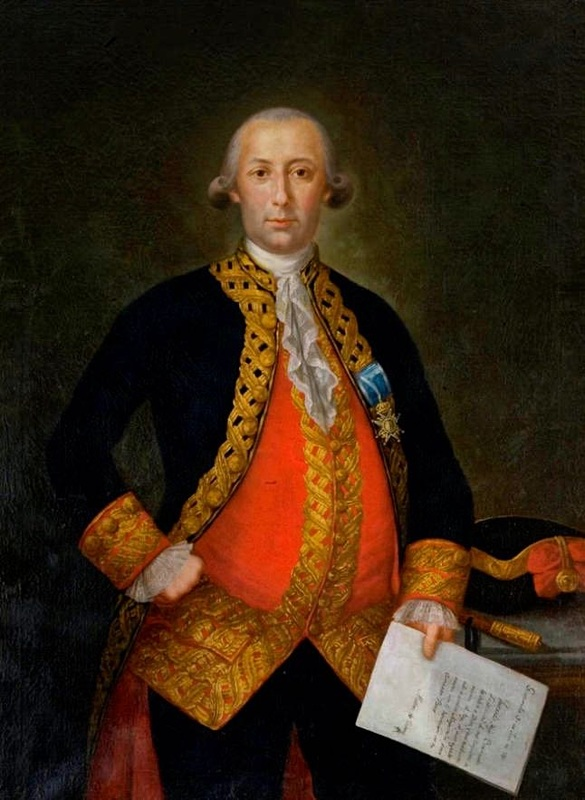The Texas Connection to the American Revolution
By the El Camino Real de los Tejas National Historic Trail Association
The Camino saw an increase in its use during the American Revolution. When conflict began along the eastern coast of the continent, Spain saw an opportunity to weaken British power in Colonial America. The Spaniards aided American forces by opening a port in New Orleans for commerce, as well as giving them weapons, munitions, soldiers, cattle, and funds. In 1779, King Carlos III of Spain finally declared war on the British Crown, making the Gulf Coast an additional battlefront. The Governor of Louisiana, Bernardo de Gálvez, was commissioned to lead troops and fight the British along the Mississippi.
With large numbers of troops comes the need to make sure they are well fed. In order to do this, Gálvez developed an agreement with Spanish General Teodoro de Croix and Texas Governor Domingo Cabello to purchase and drive cattle from the Province of Texas to the east coast. As a large export of Texas cattle had never been previously attempted, Gálvez requested that Cabello authorize and organize cattle drives numbering over a thousand from Texas to Louisiana.
By August of 1779, thousands of cattle had been gathered from missions, as well as civilian populations in the areas of Béxar and La Bahía, and driven along the trail to Louisiana. From 1779 - 1783, over 18,449 head of Texas cattle were herded from assembly points at Béxar-La Bahía, and trailed across the Camino to its easternmost points, including Nacogdoches and Natchitoches.
Tejano rancheros (ranchers) and their vaqueros (cowboys) took part in these cattle drives by rounding up cattle and herding them along the Camino into Louisiana for the military forces. Cattle were brought from as far south in present-day Texas as Laredo and Villa de Dolores. Although cattle were supplied from ranchos all over the region, the largest number of cattle came from the Villa de Béxar and La Bahía areas. From there, they traveled northeast along the Camino to Nacogdoches and Natchitoches and then on to Opelousas. The cattle drivers had a long road ahead of them traveling across the Camino, facing weather ranging from scorching heat to downpours, as well as the threat of wild animal and strays.
Ranchos (ranches) like San Francisco, Los Corralitos, Las Cabras, and San Bartolo all contributed cattle. Simón de Arocha operated Rancho de San Rafael de Pataguilla, located eight leagues (about 24 miles) north of present-day Floresville and drove 1,664 cattle. A Frenchman, Antonio le Blanc, gathered around 1,200 cattle from the area around Los Nogales, just south of the Guadalupe River, to drive to Louisiana in 1782. In 1780, Marcos Hernández gathered 1,234 with father and son, Juan José Flores and Felipe Flores. They rounded up 1,992 head for a combined total of 3,417 at the Arroyo de los Nogales near the Mission Espíritu Santo ranch lands to transport to the pueblo of La Apeluza in Louisiana.
Special Thanks to the
Grant Makers and
Patrons of the Arts
for providing
funding support for the
Heritage Celebration at The 1895!
This historical essay and related mural is made possible in part through a grant from:
The National Trust for Historic Preservation - Preservation Services Grant
City of Rockdale - Hotel Occupancy Tax Grant for Promotion of the Arts
Texas Rural Communities Grant
Texas Historical Foundation - Jeanne R. Blocker Memorial Fund Grant
Texas Brazos Trail Region Grant
Riot Platforms Community Grant
And a generous donation from the following Patrons of the Arts:
Oncor Electric

